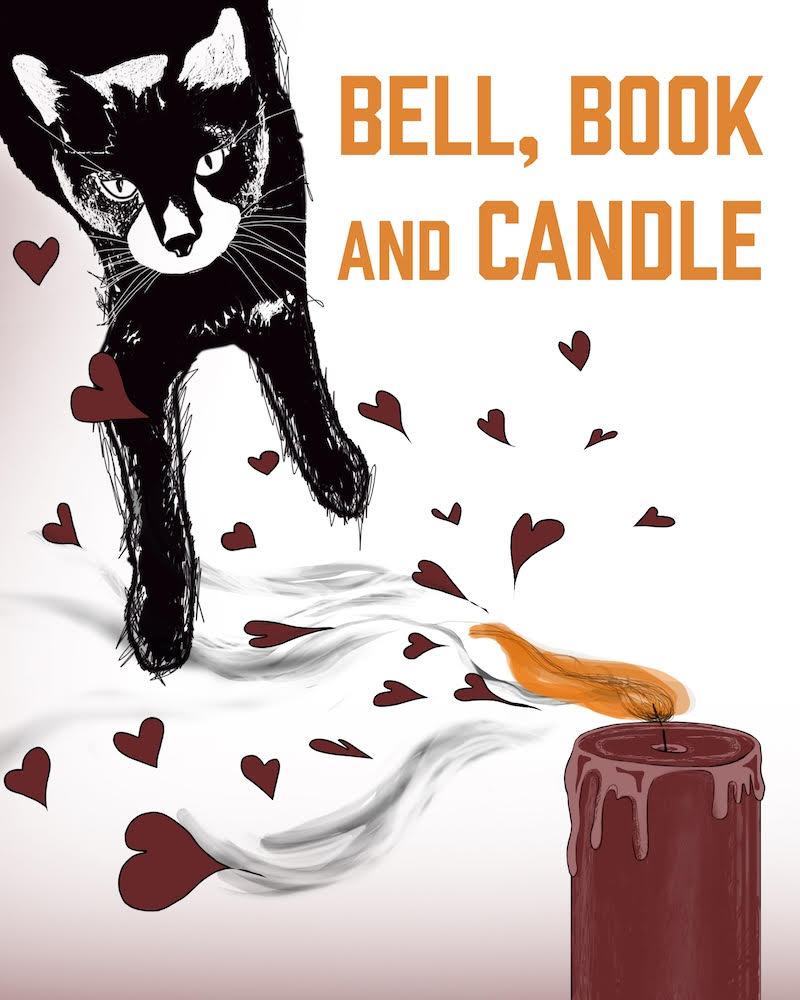
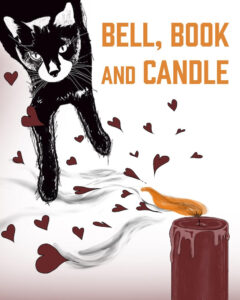 *** “Bell, Book, and Candle” by John Van Druten is billed as the inspiration for the television show “Bewitched”, with its emphasis on the supernatural. What is unique and fun about this play is seeing ritual magic at work, such as casting spells, summoning spirits, and having a cat as a familiar. We witness how witches may pretend to be ordinary human beings and lead seemingly normal lives in everyday society. But they secretly impose their will on others by creating meaningful coincidences in such a way that humans don’t realize that they are actually being manipulated.
*** “Bell, Book, and Candle” by John Van Druten is billed as the inspiration for the television show “Bewitched”, with its emphasis on the supernatural. What is unique and fun about this play is seeing ritual magic at work, such as casting spells, summoning spirits, and having a cat as a familiar. We witness how witches may pretend to be ordinary human beings and lead seemingly normal lives in everyday society. But they secretly impose their will on others by creating meaningful coincidences in such a way that humans don’t realize that they are actually being manipulated.
In this production, expertly directed by Jack Dugan Carpenter, witchly manipulation largely focuses on love and romance. Gillian Holroyd (Claire Rutkowski) is the manager of a converted brownstone apartment building in the Murray Hill neighborhood of New York City in the early 1950s. But she is also a witch, who is attracted to her neighbor Shepherd Henderson (Jered Becker), a publisher who is engaged to be married. Throughout much of the play, we see what can happen when Gillian casts a spell on Shep to make him romantically inclined towards her. At the same time, Shep has an interest in meeting Sidney Redlitch (David R. Feiler), the author of the best-selling book “Magic in Mexico.” Other characters in the story include Gillian’s eccentric aunt Queenie (Lauren Miller), who is also a witch and lives in another flat in the same building. The show begins after Queenie has surreptitiously entered Shep’s apartment and has tampered with his phone, so that he would want to use Gillian’s phone downstairs. Another frequent visitor is Gillian’s brother Nicky Holroyd (Sean Michael Barrett), a warlock, who has decided to co-author a book about witches, magic, and the paranormal from first-hand experience.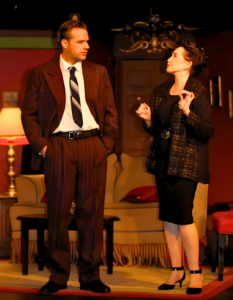

One of the major takeaways from the story is the idea that a witch could lose her powers if she happens to become romantically involved with a human being. We witness how Gillian struggles with this issue considering her affection for Shep. Can love conquer all?
While the original play has many good and creative components, the subsequent TV show surpassed it, and today the script seems somewhat dated and often ho-hum. While apartment buzzers and corded phones could also be considered dated, what is obsolete about this show is ironically what made it shocking to theatregoers in the 1950s: namely that we see a premarital relationship on stage with the emphasis on women initiating sex rather than men. Not only that, but we see an unmarried couple continually parade on stage in their underwear and being intimate—in a play which is being shown to “polite society.” What also should be added is that, by today’s standards, the script is too long and drawn out. It’s effective but needs to be tighter.
The directing by Jack Dugan Carpenter is appropriate for this stage presentation, together with the work of intimacy/movement director Melinda “MJ” Deamon. A living room set, designed by Emil Zbella, is comprised largely of strawberry red walls with fern green trim on top and works well for the entire show, whose theme spans the Christmas season. There is a bit of a prop change between the three acts. The first act on Christmas Eve features a decorated tree. The next two acts, two weeks later, are characterized by some shifts in artwork on the walls. Prop design by Paula Kenar is right on target as is Gabriel Seplow’s lighting design and Sean Smyth’s sound design. Costumes by Elizabeth Monti are nicely reminiscent of the 1950s. But there was a wardrobe malfunction on opening night during the entire second act when Becker’s sports jacket developed a huge and noticeable rip from just below the shoulder. I told my guest that the jacket will probably be fixed by tomorrow night’s performance, so it isn’t so terrible.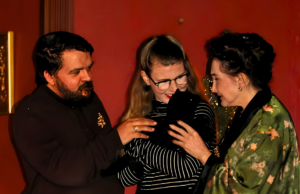
The play got me thinking about how every generation has a very different idea about whether there really can be witches disguised among us in plain sight and whether ritual magic can be a real phenomenon. I’m sure we’ve all been in the situation when the phone rings and there’s no one on the other end of the line or when a machine breaks that has previously worked perfectly. Is there some entity out there pulling the strings? And what about love at first sight? Or getting that plum job or business deal? Could it be that most of our lives are touched by magic, but instead we maintain that there must be a scientific or rational explanation for everything? Or is it the case that we don’t have the willingness to believe that the supernatural can exist?
“Bell, Book and Candle” is playing through November 10, 2024, in the lower level of St. Bonaventure Church, 1625 W. Diversey, Chicago (enter on Marshfield. just west of Ashland).
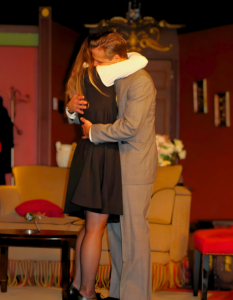 Tickets are:
Tickets are:
Full-priced tickets – $35
Seniors and children younger than 12 – $30
Students with valid IDs may purchase $30 tickets at the door.
Group rates also are available.
Performance schedule:
Fridays and Saturdays at 7:30 p.m.
Sundays at 2:00 p.m.
For more information about this show, see: https://saintsebastianplayers.org/2024-2025-season/bell-book-and-candle/.
To purchase tickets, visit: https://www.givecentral.org/customizable-online-giving/19/category/1632.
For general information about St. Sebastian Players and a list of their other offerings, go to: https://saintsebastianplayers.org/.
Free parking is available in two lots.
To see what others are saying, visit www.theatreinchicago.com, go to Review Round-Up and click at “Bell, Book, and Candle”.






More Stories
“Adverses”
“Blue” reviewed by Jacob Davis
“The Secret Garden”